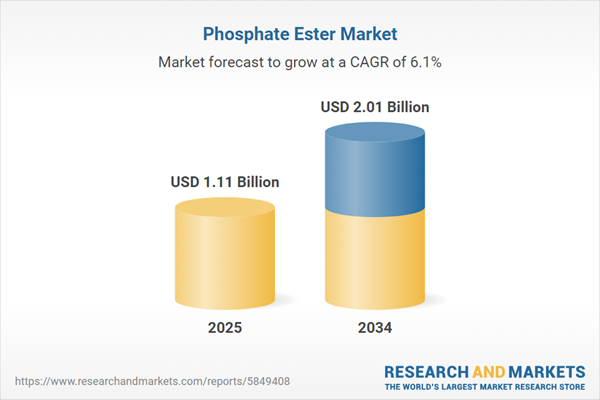The Asia-Pacific to be a Significant Regional Market for Phosphate Ester
The Asia-Pacific region has emerged as a prominent market for phosphate esters and is projected to maintain its dominance during the forecast period. The market growth is supported by the increasing demand for plastics and polymers in countries such as China, India, Vietnam, Thailand, and Indonesia, driven by economic and infrastructural development.In the coming years, the Asia-Pacific region is expected to play a crucial role and offer significant growth opportunities. This can be attributed to the growing demand for advanced consumer products and the expansion of automotive production in this region. Furthermore, the market for phosphate esters in the Asia-Pacific is driven by its importance in the agrochemical sector, particularly in the production of pesticides. The region's thriving manufacturing sector also contributes to the demand for industrial lubricants that rely on phosphate esters to prevent equipment failures caused by insufficient lubrication.
Phosphate Ester: Industry Definition and Segments
Phosphate ester (or organophosphate) is a class of organophosphorus compounds that are a complex mixture of monoester, diester, free orthophosphoric acid, and free nonionic material. It is also known as an ester of phosphoric acid. It is an active anionic surfactant, which is produced as free acids.On the basis of type, the market can be divided into:
- Triaryl Phosphate Esters
- Trialkyl Phosphate Esters
- Alkyl Aryl Phosphate Esters
- Others
By application, the market is classified into:
- Lubricants
- Fire Retardants
- Surfactants
- Hydraulic Fluids
- Paints and Coatings
- Plasticisers
- Pesticides
- Others
Market Breakup by Region:
- North America
- Europe
- Asia-Pacific
- Latin America
- Middle East and Africa
Wide Range of Applications of Phosphate Ester to Boost the Growth of the Market
The global market for phosphate ester is being driven by its increasing applicability starting from surfactants to fireside retardancy. It is used as a fire-resistant base stocks in several applications, including turbines, hydraulic systems, and compressors. Their excellent oxidation stability, high ignition temperatures, and low vapor pressures hinder ignition, while their low heats of combustion aid in self-extinguishing fluids. Such properties have aided the product adoption over the historical period.Recent developments within the automotive industry, booming construction sector, and the stable growth of the aviation and marine industries have propelled the growth of the phosphate ester industry. Flourishing infrastructural and agricultural developments and the growing installation of latest industrial plants within the developing markets are further catalysing the market growth. Their wide applicability in manufacturing household cleaning products like detergents, soaps, fabric softeners, and others have also aided the market growth. Steadily growing GDPs, combined with rising per capita income of individuals in developing nations, are contributing to the growth of the phosphate ester industry. The gradual shift in trend towards the development of bio-based esters is anticipated to witness growth, which is expected to bolster the phosphate ester industry.
Key Industry Players in the Global Phosphate Ester Market
The report gives a detailed analysis of the following key players in the global phosphate ester market, covering their competitive landscape, capacity, and latest developments like mergers, acquisitions, and investments, expansions of capacity, and plant turnarounds:- BASF SE
- Dow Inc.
- Exxon Mobil Corporation
- Stepan Company
- Solvay SA
- Ashland Inc.
- Others
Table of Contents
Companies Mentioned
The key companies featured in this Phosphate Ester market report include:- BASF SE
- Dow Inc.
- Exxon Mobil Corporation
- Stepan Company
- Solvay SA
- Ashland Inc.
Table Information
| Report Attribute | Details |
|---|---|
| No. of Pages | 151 |
| Published | August 2025 |
| Forecast Period | 2025 - 2034 |
| Estimated Market Value ( USD | $ 1.11 Billion |
| Forecasted Market Value ( USD | $ 2.01 Billion |
| Compound Annual Growth Rate | 6.1% |
| Regions Covered | Global |
| No. of Companies Mentioned | 7 |









